Remembering a record breaking World Cup final
Two weeks ago it was International Women’s Day, and I was part of a large crowd from many countries watching the final of the Women’s Twenty20 World Cup 2020 at the MCG. Promoters, players, and fans alike were eyeing the record book, and #FillTheMCG had been trending on social media. Unlike England, Australia had been fortunate to qualify in a rain-hit semi-final, and were facing India in hope of a home title and a chance to confirm their dominance over women’s cricket.
It all seems so distant now: Australia have banned crowds over 100 and enforced social distancing, there is a blanket “Do not travel” warning for foreign travel, the borders are closed to outsiders, residents returning from overseas must self-isolate for fourteen days, and I myself have been in isolation with a mild fever (probably not Covid-19). As a result, I’ve been a little hesitant to write about it, but I think it’s worth remembering.
What I learned about women’s sport from school
When I was in school, sport was supposed to be much more of a boy’s thing. Everyone knew that boys were stronger and faster and more rugged and more skilful with the ball. They were also much more suited to rough-and-tumble contact sports and more willing to get muddy. Really, interest in sport was an expectation: It was much more permissible for a girl to say she didn’t really like sport or wasn’t good with the ball than for a boy to.
The same, I think, applied to backyard sports: In my experience, boys were expected to be involved. Girls were permitted to be involved, but it was generally assumed that they were less capable and had to be treated gently. And as they grew older I think it was more likely that girls were encouraged to stop being involved in those sports and instead be “lady-like”.
Even the sports they were involved with were different. Sometimes this was for practical reasons: For example, having girls play soccer in the summer and boys in the winter meant the school only needed one soccer oval rather than two. But I don’t remember girls ever being allowed to play cricket or Australian Rules football, while netball had been specifically created for girls and was girls-only.
This also bled into career choices. Boys were allowed to aspire to become the best of the best at their chosen sport, go pro, and become a millionaire or represent their country or win a gold medal. I’m not sure girls were to the same extent.
For big events like the Olympics women might have had similar options to men, and we did hear names like Dawn Fraser and Cathy Freeman. But when it came to the big sports, like cricket and Aussie Rules, even if there were opportunities women couldn’t look for high pay, and certainly wouldn’t become household names like their counterparts in the men’s team.
I’m sure girls were meant to do something appropriately gendered, perhaps teaching or nursing or secretarial work. And if women did see involvement in major sports, it was more likely to be in the gossip columns as the girlfriend / wife of a famous sportsman than on the field.
What I knew about women’s cricket before the match
I have followed the men’s cricket team fairly consistently since I was in high school. It wasn’t hard to follow, since it was often front or back page in the newspapers and covered in detail by sites like Cricinfo. However, I’m not sure I even knew there was an Australian women’s cricket team until a few years ago.
Since then, I’ve followed the scorecards, knew the names of many of the key players, and as a good Australian appreciated the team’s dominance. I heard about the rise in popularity of the Women’s Big Bash League, and particularly remember hearing on the radio the conclusion to a frenetic WBBL final.
However, I’d never actually watched a women’s cricket match, and the World Cup final seemed like a good opportunity to change that. They were trying for a record crowd at the mighty MCG. It was going to be a great atmosphere. And I hoped Australia would be in the final, which they were (though they were very close to being eliminated by Sydney rain).
A beautiful day
Well, the day dawned, bright and sunny. Public transport was significantly disrupted for planned maintenance, but that wasn’t going to deter me.
The one thing that was visible from the start was the crowds. Yarra Park was already crowded, and people continued to stream in.
There was a fan zone with practice nets, activities, and street art. The decorations were strongly Melbourne, including a T20 World Cup tram and pictures of Flinders Street station. There was even an Indian band marching, I think entirely organised by local fans.
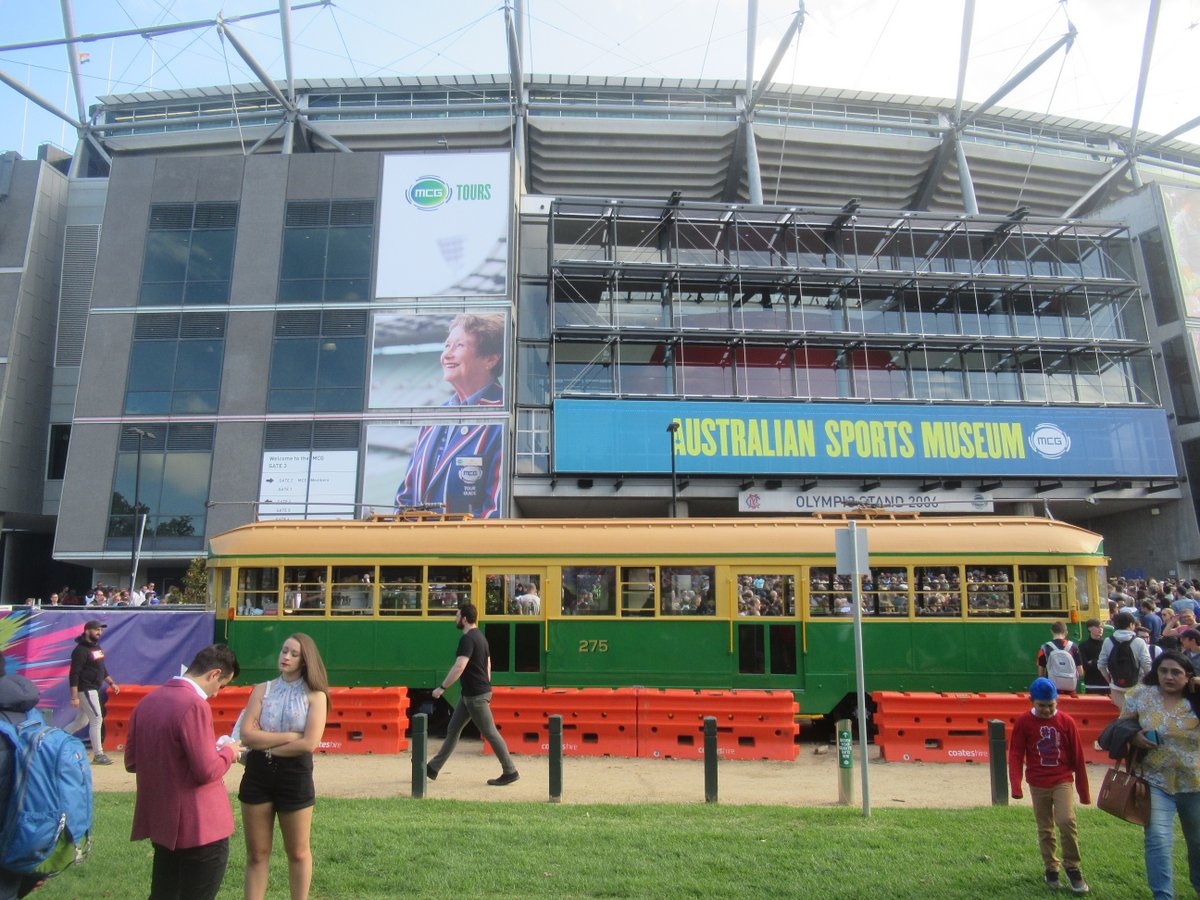
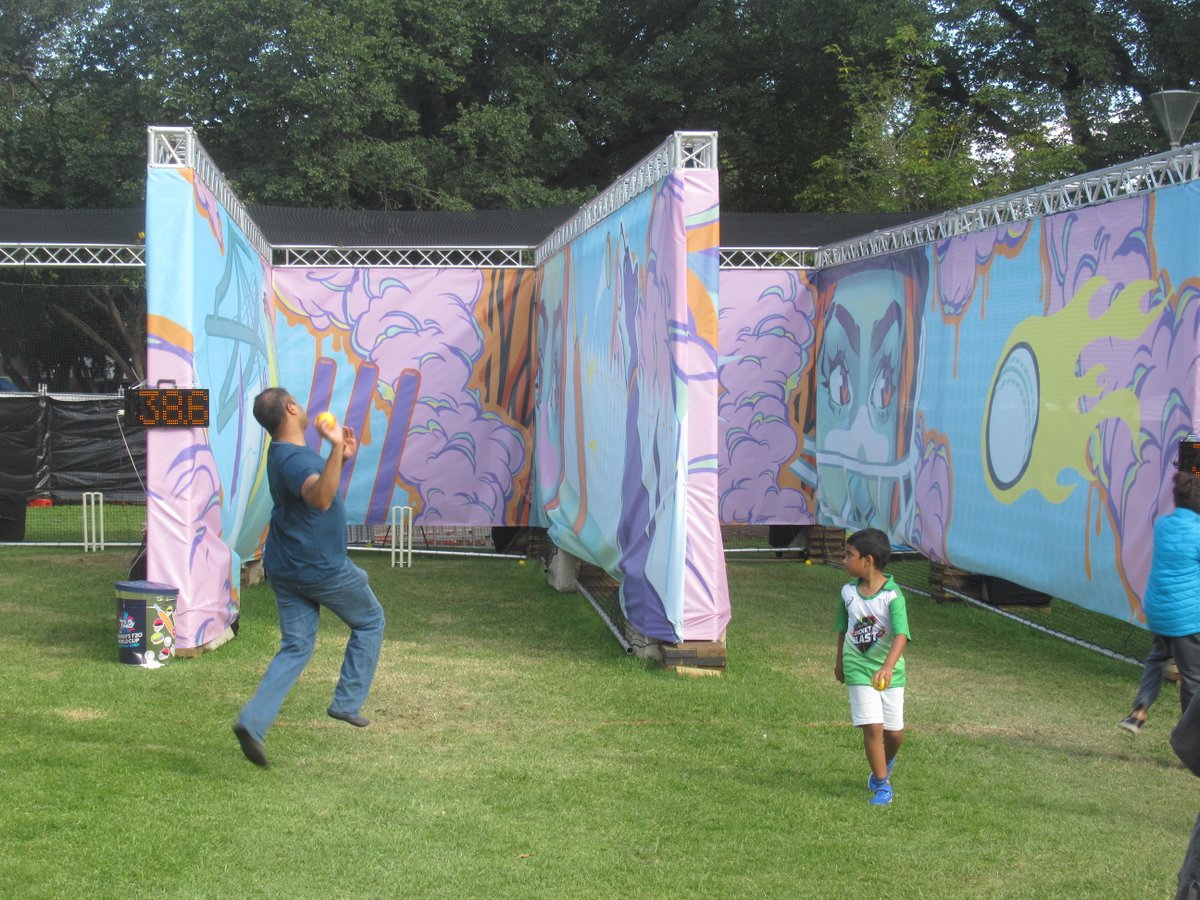

Navigating the crowds
When it came to actually getting in to the stadium the crowds were hectic, the instructions confusing, and the security screening relatively perfunctory. Even after I got through there were quite a few left, and I’m sure it was several times bigger when I first joined the queue. It took time and it took patience, but in spite of it all, I think we all wanted to be there.

Women on the “sacred turf”
Katy Perry was doing entertainment both pre- and post-match, and during the pre-match entertainment there were many women out on the “sacred turf” holding “Girl Power” signs.
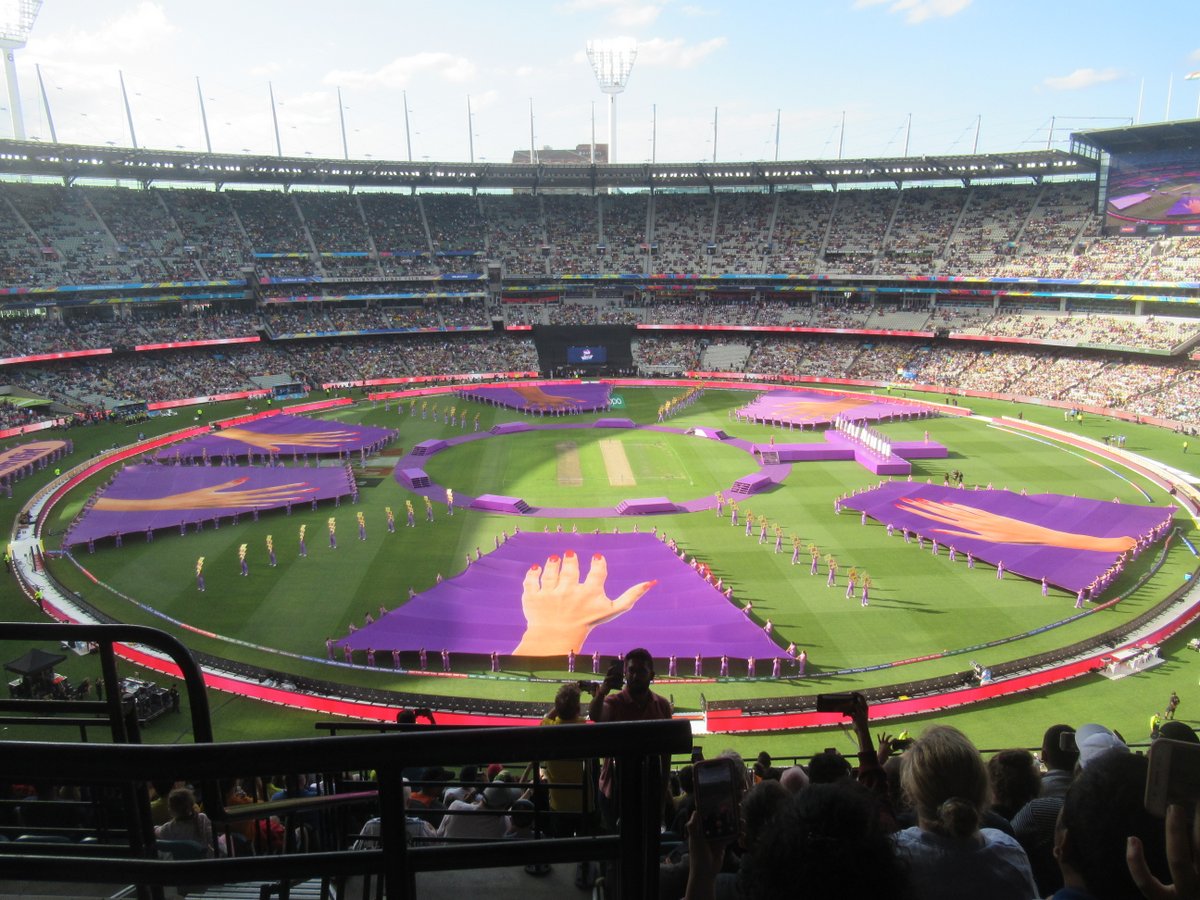
Don’t underestimate the importance of this. I’m pretty sure the ground is traditionally masculine territory. It was International Women’s Day, and women were welcome there. Not only were they welcome, but a large crowd, both male and female, had come to watch them.
I don’t think I would have imagined anything like that in my childhood.
The match
I’m not going to give a blow by blow account (for full details, see the Match scorecard).
Australia were on top from early in the opening partnership, and they never let India off the hook. India let Alyssa Healy off in the first over. I said at the time “It’s a bad idea to let Alyssa Healy off”, and so it proved, as she turned in a Player of the Match performance that was both aggressive and entertaining. Her opening partner, Beth Mooney, took control of the second half of the innings and remained undefeated, top-scoring to underscore her claim to Player of the Tournament.
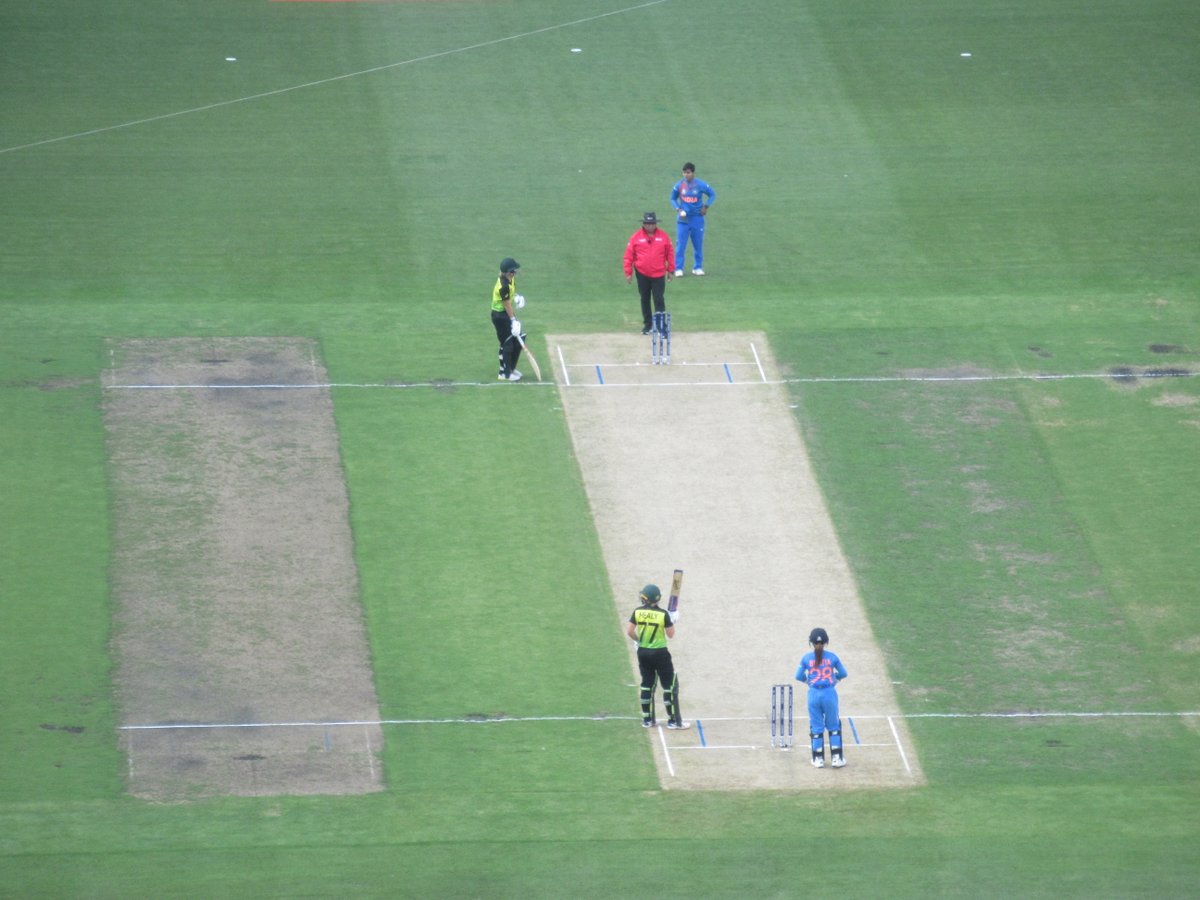
Where India had let Australia off early, Australia refused to return the favour. The bowling and the fielding were both tight, and within a couple of overs India were looking in big trouble. I had hoped India would at least make 100, but Australia ended up bowling them out for 99 to record a substantial victory.
I’ve heard it’s much more common for commentary on women players to focus on marital status, age, or appearance. That wasn’t why I was there, and that’s not what I saw. It wasn’t about their personal appearance, or their womanly grace, or anything like that. I’m sure there are some differences between men’s cricket and women’s cricket, but I didn’t see them. And, for all the talk when I was younger about men being stronger and better at sports than women, each and every one of the women in that final is far better at cricket than I am. They deserve their success.
The awards
The Australian team had won a World Cup, at home, in front of a record crowd. It was a time to celebrate, and celebrate we did.

It was a time to recognise achievement, particularly the achievements of Alyssa Healy and Beth Mooney, but more generally the achievements of both teams. Everyone playing there had worked hard to reach that final.
So there was a presentation ceremony (and yes, they actually did handshakes back then).
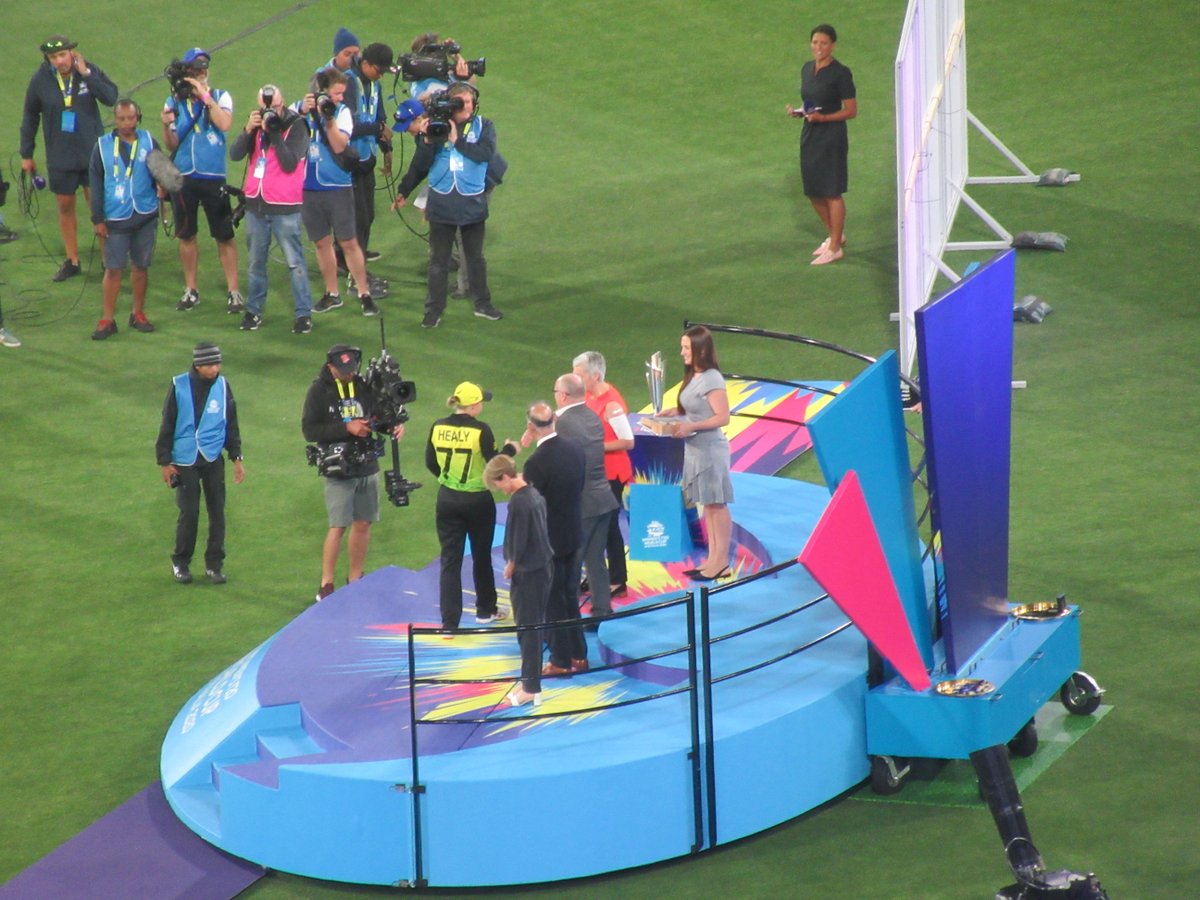
A record crowd
When it came to crowd numbers, the organisers had a number of records in mind. Some of them we made, others we didn’t.
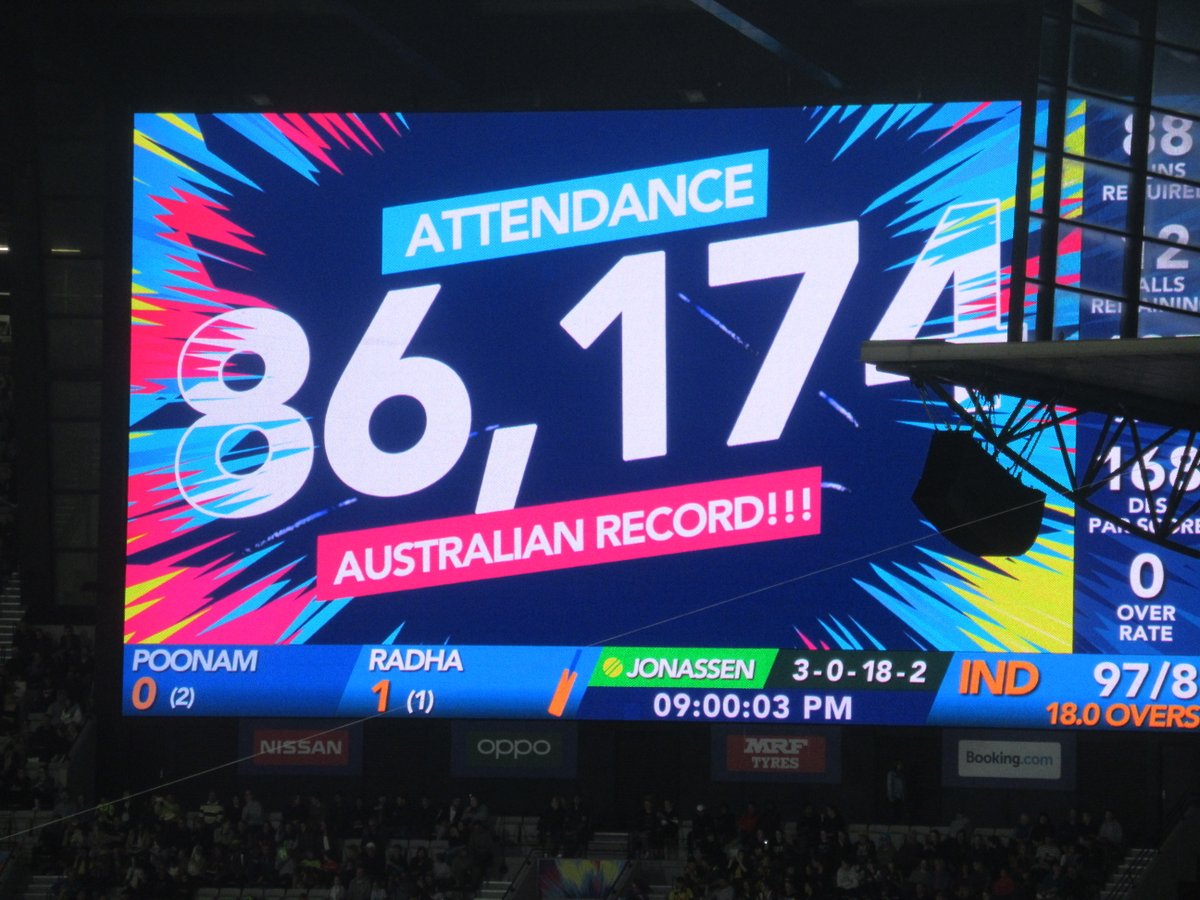
It was the largest crowd for any women’s cricket match in the world. It was also the largest crowd for any women’s sporting match in Australia. The final goal had been to be the largest crowd for any women’s sporting match anywhere in the world, and we fell around 4,000 short of that (the 1999 soccer World Cup final in California between the US and China).
However, in the end that didn’t really matter. When interviewed, Alyssa Healy talked about how she’d thought women might draw crowds like this in 20 years time, but it would never be in her career. It was an opportunity that she’d never expected, and she spent the entire day smiling. Really, it was a virtuous circle: Our presence made the players happy, and their performance made us happy.
For me, it was the largest crowd I’d ever been in, and the atmosphere was amazing. I’ve been to the Boxing Day Test twice (crowds of 67,000 and 80,000), but this was visibly bigger. I also think I enjoyed it more than either of those two days, good as they were.
Part of something bigger
Near the end of the match, everyone was asked to get out their phones, turn on their torches, and light up the MCG. The same happened during one of Katy Perry’s songs in the post-match concert after dark:
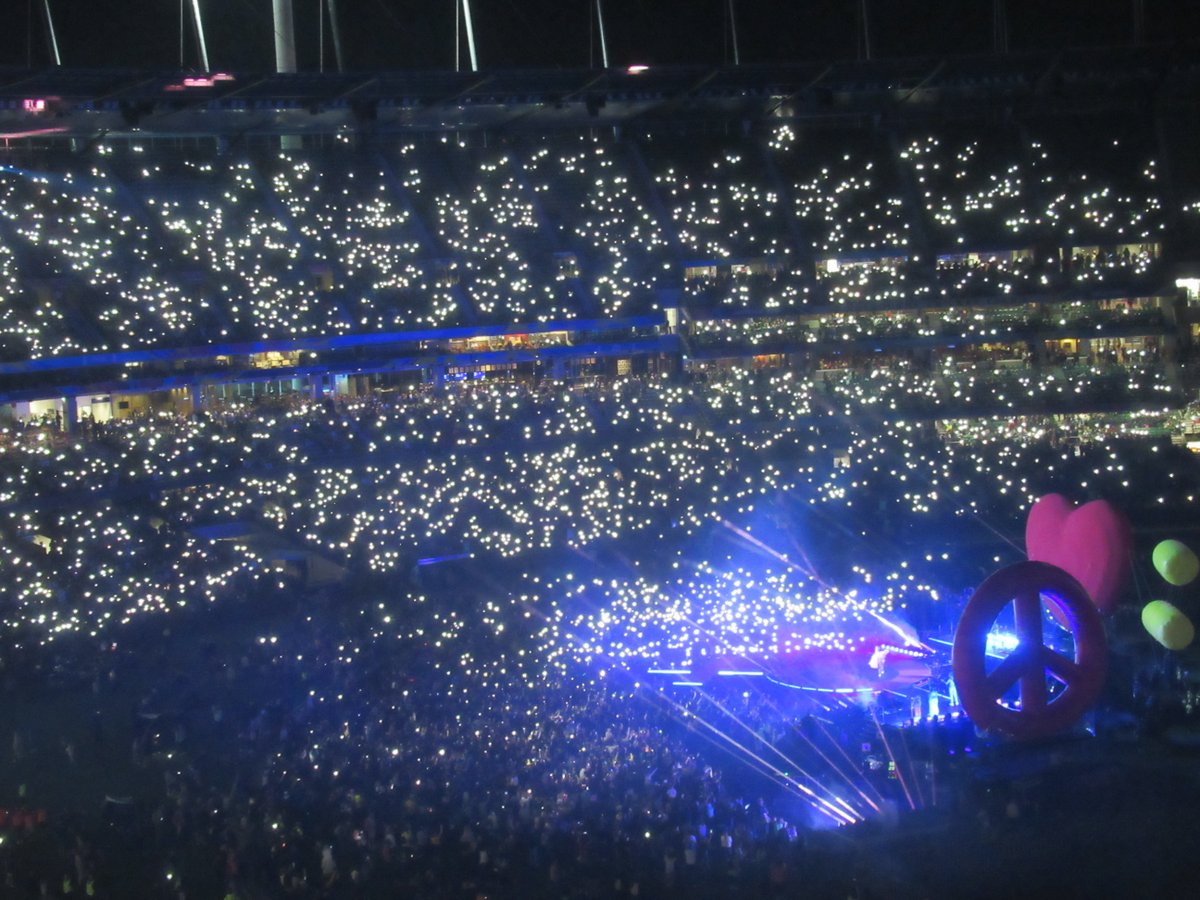
We were already a large crowd, but in those moments it felt like we were part of something bigger. It was International Women’s Day, and we were part of a wider movement reaffirming that women matter.
That was what was intended - and I think it worked. Like I said before, women had invaded the sacred turf of the MCG - and they were welcome there.
I saw many young girls in the crowd, and I hope they took away the message that they are welcome, and that it is OK for them to aspire to the highest levels of sport. Because that’s exactly the same message as generations of their brothers have taken from watching men’s cricket.
Representation matters.
Time for a confession: Where I grew up, “feminism” was a bad word. Women were meant to know their natural, God-given role in the world. It was sometimes OK for them to enjoy sport at school, but as they grew older they were meant to transition to more serious duties as wives, mothers, and home-makers. Men could be anything they wanted to be (except perhaps a full-time parent). Women couldn’t.
We don’t need every girl to be interested in sport, any more than we need every boy to be interested in sport. What I think we want is for those girls who do want to take it further to be able to aspire to do so. This is a difficult road at the best of times, but at the moment I think it’s more difficult for women.
Times are changing for women’s sport, and it’s not just cricket. Aussie Rules, the winter sport of choice in Victoria, now has a Women’s AFL which is gaining increasing coverage.
The other sport I personally follow is tennis, and I would say exactly the same as I said about cricket: The women’s matches I’ve watched have been as hard-fought, as entertaining, and as skilful as the men’s matches I’ve watched. There may be differences between the men’s and the women’s game, but the women remain far better at tennis than I will ever be.
The current No 1 women’s tennis player is actually an Australian - Ash Barty, the reigning French Open champion. As it happens, she has also played cricket professionally, representing Brisbane Heat in the summer of 2015/16 while taking a break from tennis.
In tennis, women fought for equal prize money (and continue to fight to retain it). In cricket, Australia has led the way in professionalising women’s cricket, and other nations are beginning to follow. At present, I believe the women are paid significantly less than their male counterparts, but the hope is that rising crowd numbers and greater recognition can lead to greater equality.
Part of the reason I was even at the final was because tickets weren’t prohibitively expensive, like they would be at a men’s final. I do hope for women’s cricket to be successful enough that they can draw reasonable crowds to all events and charge a premium for special events like finals. In cricket, that day isn’t here yet - though I think it might be in tennis, at least for the Grand Slam finals.
The final celebration
For her final song, Katy Perry called the Australian cricket team on stage:
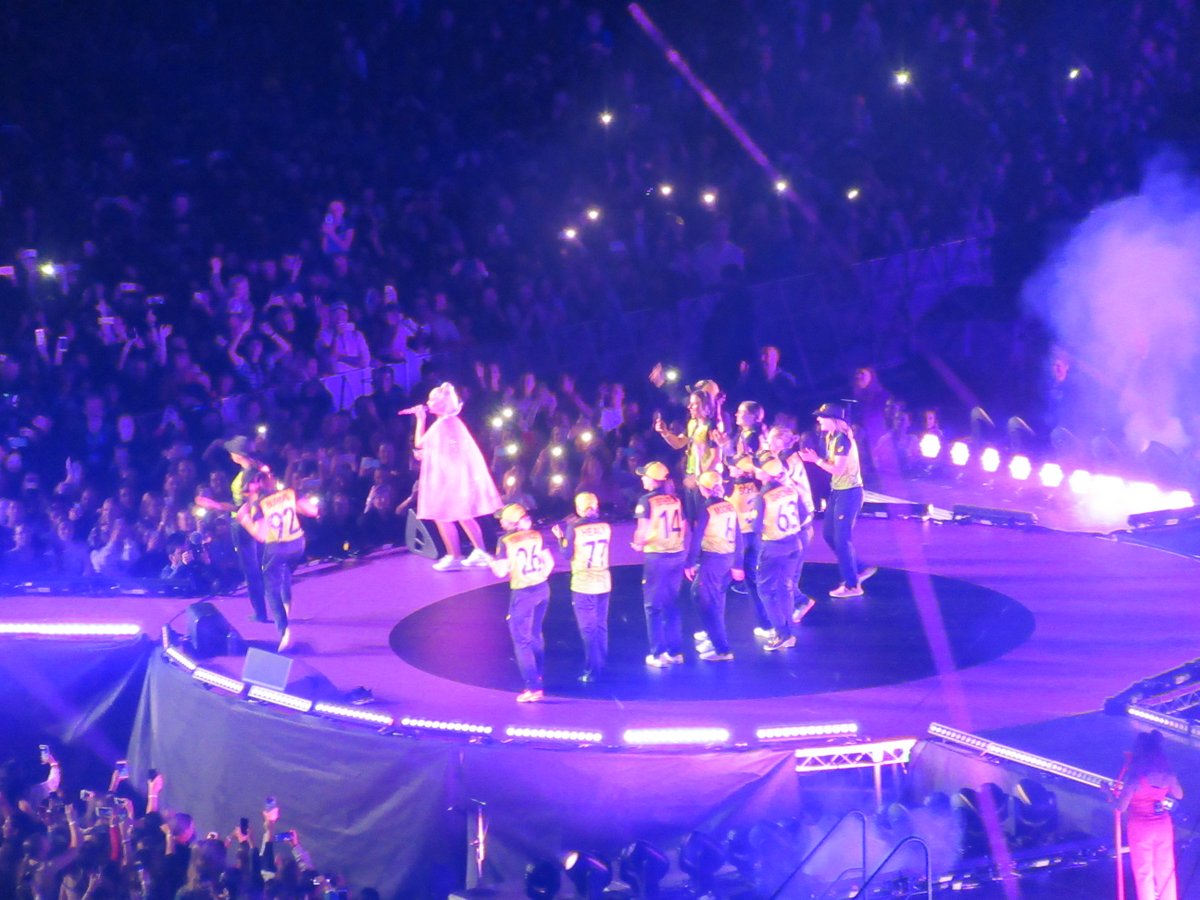
And it was just such a great moment. Particularly when one of them pulled out her phone and took a photo with Katy Perry - even stars are allowed to be star-struck sometimes.
It felt like a celebration of everything they have achieved and continue to achieve. They had worked hard, they had played a great match, and they deserved the opportunity to celebrate together and have fun.
That’s how you celebrate a win. pic.twitter.com/vEUsUTINZ1
— Neroli Meadows (@Neroli_Meadows) March 8, 2020
Perhaps you think I’m exaggerating the importance of this event, and maybe I am. I can’t compare it with other women’s cricket matches, because it was my first one. But it did feel like a significant event, and I was very glad I was there.
I came expecting to enjoy it, but it still greatly exceeded my expectations. I’m proud of the way this team represents Australia, and I’m proud that Australia gives them these opportunities. Hopefully it is not a false dawn but the start of a new era.
The Covid-19 aftermath
We’re now two weeks on, and the world looks very different. Today, a crowd of that size doesn’t signal a joyous occasion, but an epidemiologist’s nightmare. Handshakes are gone, sporting leagues are closed, concerts are suspended, and “social distancing” is the new buzzword.
In retrospect, it’s easy to say that this event shouldn’t have run. And perhaps it shouldn’t have. It was a large crowd in close proximity, and one of the attendees did later test positive for Covid-19. I certainly hope we didn’t make the current situation worse.
However, Cricket Australia say they were in close consultation with government health experts every step of the way, and I don’t remember hearing calls in advance to cancel the event.
The following weekend Melbourne was due to have the Grand Prix, with even larger crowds expected. There were many calls for that event to be cancelled, and in the end it was cancelled at the eleventh hour. This after multiple team members had been in self-isolation and one driver tested positive for Covid-19.
Since then there have been changes in policy pretty much every day, as the news around the world worsens and as we come to recognise how much fighting Covid-19 changes everything. Clearly we weren’t quite ready for that two weeks ago.
Something to look forward to
So why do I write about this now? I was a little hesitant, but ultimately I think the event was a feel good story, and I think right now we need some feel good stories. It was a wonderful time, and I don’t regret being there.
The Covid-19 situation will get worse before it gets better. Life as we know it is going to change, probably for a long time. We already have tighter social restrictions in Australia than I ever remember having, and in the coming weeks and months they are certain to get tighter.
However, I think it’s important to remember what we are fighting for. We want a world where we are once again safe and free to attend concerts, to celebrate sporting successes and failures, and to mingle with crowds of our fellow humans. The route there may involve isolation and unaccustomed sacrifices, but with a worldwide pandemic we really are all in this together.
To keep going through difficult times, I think we have to hope that things will get better some day. I certainly hope there will be many more events like this final in my life-time. And to me part of the hope is that we will be able to continue to give people more opportunities and to correct historical injustices. We don’t just want to return to the former status quo - we want to be able to build a better world.